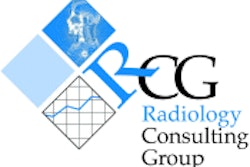ATLANTA - Hospital information technology departments are increasingly being asked to become involved in the purchase and operation of PACS networks. To help educate IT staff about the unique requirements of radiology departments and PACS, several leading PACS researchers discussed the technology, the requirements, and the clinical impact of digital image management in a session Monday at the 2002 Healthcare Information and Management Systems Society (HIMSS) meeting in Atlanta.
Compared with other clinical specialties, radiology is uniquely dependent upon IT. One reason is the specialty’s use of the workstation as a diagnostic tool, said Dr. Eliot Siegel, director of imaging at the Baltimore VA Medical Center and the University of Maryland.
At the diagnostic workstation, radiologists perform image enhancement and can take advantage of voice dictation or structured reporting software. In addition, radiologists need to access electronic medical records, and gain online information access, Siegel said. Radiologists also need access to communications networks, and increasingly, are taking advantage of technologies such as computer-aided detection (CAD).
"To a greater extent than ever, radiologists are being asked to sit at these command-and-control centers that are dependent on IT support," he said.
Radiology departments also require IT for scheduling, and for connecting imaging modalities with hospital and radiology information systems, Siegel said. In contrast with other specialties, radiologic images must be archived for medico-legal purposes for five years. Radiologists are also clinically responsible for making images available to other healthcare providers, and for performing quality control, he said.
"Radiologists have responsibility for optimizing not only the quality of their own acquired images but also for image display, since decisions (by clinicians) based on the images throughout the enterprise are often made before the official radiology report is generated," Siegel said.
Imaging workstations are very different than text-based EMR displays, he said.
"Often, we require very complex, multiple windows of information with dynamic or relational information, with complex navigation through subsets of image data," Siegel said. "We're increasingly being asked not just to look at static images, like a chest x-ray or a CT study, but to have overlapping and dynamic images, such as a CT/PET scan."
Radiology is also experiencing an explosive growth in the number of imaging exams and number of images per exam. With the market shortage of radiologists, there's an even greater need for efficiency and IT, Siegel said.
PACS technology
PACS networks consist of image acquisition devices (modalities), networks, display devices, image servers or image archives, and storage devices, said Dr. David Piraino, section head for computers in radiology at the Cleveland Clinic Foundation.
Acquisition devices must comply with standards such as DICOM, and more recently with Integrating the Healthcare Enterprise's (IHE) integration profiles, he said. And thanks to swift growth in image data sets from modalities such as new multidetector-row CT systems, the networks need to be fast.
"Radiology and cardiology departments are big producers of information, and this needs to be planned for and be taken into account," Piraino said. "We're all glad to see gigabit networks coming online."
In display technology, much attention has been focused on resolution, but brightness and contrast are as important, if not more important, he said. Controlling ambient lighting should also be considered.
Available displays include traditional cathode ray tubes (CRTs) and flat-panel displays, and PACS users have to choose between grayscale and color monitors.
"Black and white devices typically will have much higher contrast and resolution than their corresponding color displays," Piraino said. "This is a tradeoff in the appearance of the image with the utility of the monitor."
Common image viewing tools for workstations include: a means of image layout, stack views, scrolling, image navigation, and hanging protocols. Image manipulation tools include: window/level, measurements, multiplanar reconstruction, 3-D, annotation, reference image selection, and teaching files functionality, Piraino said.
Minimum diagnostic resolution for a diagnostic workstation is 1K x 1K. Radiologists need to be able to see the full-resolution image, so a magnification capability is a must, he said. Radiographic studies are typically interpreted using 2K x 2K monitors.
The requirements of clinical workstations are a grayer area. Because clinicians are making medical decisions based on these displays, they need, at a minimum, adequate resolution and tools such as zoom, pan, window/level, stacks, comparison, and reference lines, Piraino said.
Image servers or archives should be able to query/retrieve, receive, send -- and compress images if necessary -- at different levels. As for storage devices, developments such as storage area networks (SAN), network-attached storage (NAS), and "nearline" storage are growing in value for radiology, owing to surging storage requirements, Piraino said.
A quality control program that includes regular and documented QC procedures to ensure quality and accuracy should be implemented, he said. This should include routine testing of display devices, software, and transmission.
By providing dramatically improved report turnaround times, a successful PACS installation also sparks increased utilization of imaging services, said Dr. Bruce Reiner, associate professor of radiology at the University of Maryland/Nanticoke Memorial Hospital.
"What we found (from national and local data) is about 40% difference in outpatient utilization and about 43% difference in inpatient utilization," Reiner said. "As you implement your PACS it has to be scalable, and you have to have the ability to accommodate infrastructure changes that occur as you increase your exam volume."
The IHE initiative offers a simple means of handling radiology transactions and integrating different heterogenous information systems, said Dr. David Channin, an assistant professor of radiology at the Northwestern University Medical School in Chicago.
By Erik L. RidleyAuntMinnie.com staff writer
January 29, 2002
Copyright © 2002 AuntMinnie.com



















